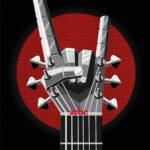How to reduce muscle strain pain in 30 seconds or less.
How to reduce muscle strain pain in 30 seconds or less. I have a method that I use when I have strained a muscle. Sometimes it happens when you move the wrong way, sleep on a bad pillow, or lift something too heavy. You feel your muscle start to seize, it’s tight and pinchy, may feel like a nerve, but one thing is for sure, It’s going to ruin your day. When you have this feeling, my recommendation is simple. If you don’t feel it is a medical emergency, then follow the steps below or just watch the video below: find the nearest object you can pick up that is solid, won’t break, and has a rounded edge. A golf ball, a cane, a wooden spoon or even a tennis ball will work. If all else fails, use a thumb. Locate the epicenter of the muscle strain and pain. Take your round object and apply firm, static pressure to the epicenter of the pain for 20-30 seconds Release the pressure. Gently test for mobility by moving slightly. Repeat if necessary While it is not unusual to have to repeat this 3-5 times, typically what you will notice will be...
read moreMuscle Knots, Strain, Sprain, Pulls, Pokes, and Pain. Try this S.H.*.T.
Do you want to try to feel better at home? Then get this SH*T done. Pain in nerves, muscles and joints plague the vast majority of Americans at one time or another. So if you are in pain, you are not alone. Most of our patients declare on their first visit that they’ve waited so long because they were trying to “get better on my own.” This is a great idea, IF you know what your problem is caused by, what needs to be done, how you execute the “fix”, for how long, in what quantity, etc. It can be complicated to the inexperienced home doctor. I do not advocate working on a problem at home until you know that it is safe to work on your ailment by yourself, or under the guidance of your doctor. That being said, many of us have had issues that feel familiar enough to not worry, and we just want to give it a couple more days. If you are certain that you are not dying, you are not feverish, paralyzed, or otherwise very compromised, try getting this S.H.I.T. done. S – Stretch H – Heat I – ICE T – Trigger...
read moreCarpal Tunnel Syndrome: The Guitar Player and Bass Player.
Carpal Tunnel Syndrome And The Guitarist Prevention. Management. Healing. In this brief post, you will learn about the anatomy of the carpal tunnel, what carpal tunnel syndrome (CTS) does to the guitarist, and how to prevent, manage and treat CTS yourself. The carpal tunnel is a band of ligamentous tissue that traverses the wrist. Think of it as a stretchable bridge over a stream. Underneath the carpal tunnel ligament, also known as the “Flexor Retinaculum” or “carpal ligament”, is where your forearm and finger tendons live. It is also where the nerves and blood vessels run along side one another to nourish and control your hands. All of these structures are packed pretty tightly through the wrist, under the flexor retinaculum. Carpal tunnel syndrome occurs when inflammation due to repetitive stress, or scar tissue and adhesion due to repetitive stress accumulates under the flexor retinaculum. This is one of the more common playing related musculoskeletal disorders or PRMD’s in guitarists and bassists. Beyond pain, numbness, tingling and even weakness may occur in the hands and fingers. Loss of dexterity, and even muscle loss may occur in severe cases. The surgical treatment of this involves cutting the flexor retinaculum and...
read moreShoulder pain in guitarists. Bass Player shoulder pain.
Why do so many guitarists have shoulder issues? It’s really quite simple. One arm is up to work the neck and frets of the guitar, the other arm is down to strum.The strap of the guitar pulls down on the shoulder of the hand on the neck of the guitar, applying pressure to the trapezius and elevator scapula muscles, among others. Looking down at music, or the guitar itself puts additional strain on the neck and upper trapezius muscles. This strain makes the head feel heavier, but it’s the muscles of the upper traps, upper back, shoulder and neck muscles that do most of the work to provide your neck with the angle to look down. This combination, in conjunction with stress of life, is plenty to cause chronic neck and shoulder pain and fatigue. I am often asked, when is it too late? When has the problem become “unfixable?” Fortunately, until the spine or shoulder joint itself is involved in the way of degeneration (arthritis), disc disease, or reversal of the curve of the neck, most discomfort is muscular in origin. These muscles run down into the shoulders and will make everything hurt, but the bark is often bigger than...
read moreTennis Elbow Pain. Best Home Exercises!
How to Reduce Pain from Tennis Elbow – At Home! Generally speaking, Tennis Elbow (aka Lateral Epicondylitis) is an overuse injury that can cause small tears in the muscle tendons that attach to the outside of the elbow, resulting in pain, dysfunction, and the annoying inability to perform once easy daily tasks. A new systematic review and meta-analysis in the Journal of Clinical Medicine by Yoon et al. published in September 2021 determined that there are key exercises that can reduce your elbow pain significantly and conservatively and those are “Eccentric Exercises” of the forearm.¹ Eccentric muscle contraction occurs when you load the muscle while lengthening it, while concentric muscle contraction occurs when you load the muscle while shortening it. Here is a video showing how to perform eccentric exercises for the forearm to help reduce your elbow pain over time. You can use a resistance band, a dumb-bell, a rubber resistance bar, or even a filled water bottle. Frequency can range between 10-15 repetitions per set, 2 times per day, 3 days per week, using 1-5 pounds to start. You can decrease or increase these parameters depending on your ability. Here in the office, incorporating adjustments, acupuncture, physiotherapy...
read more




